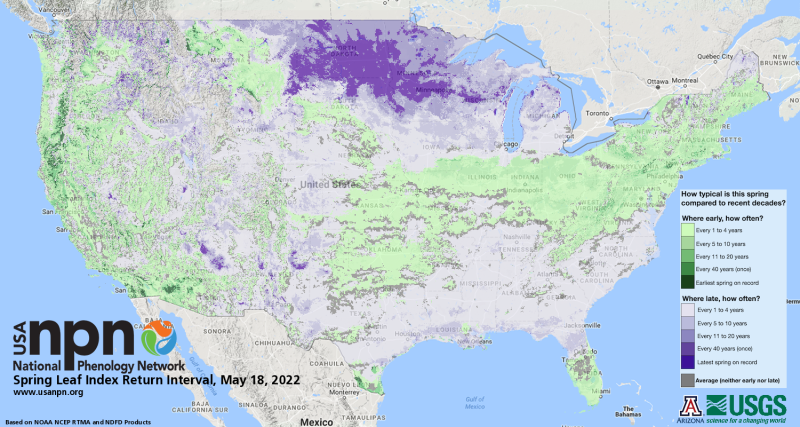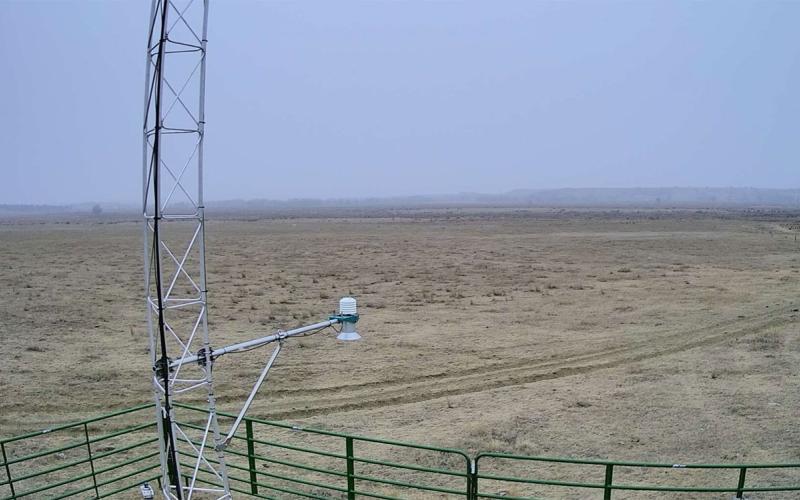
Originally Submitted: May 18, 2022
Cool spring temperatures delay the emergence of some of our favorite springtime indicators, like perennial flowers and leaves and blossoms on shrubs and trees. The first 60 days of spring 2022 (March 19 to May 17) have been abnormally cool. In South Dakota, temperatures have been one to four degrees below average. This has translated to late appearance of many phenological indicators.
Phenology is the study of plant developmental phase or stage and can be related to air temperature. Indicators like the first leaf or bloom of some common plants can be used to define the arrival of spring. The map in Figure 1 from the National Phenology Network uses climate data to determine first leaf. This climate is used with a mathematical model that has been developed using historical plant-stage data from observations of lilac and honeysuckle varieties over many decades.
In South Dakota, with temperatures cooler than average so far this season, the arrival of spring has been later than usual. In fact, for parts of northern and northeastern South Dakota, it is the latest in the 40-year record of the USA National Phenology Network, as shown in the dark purple color. For southern South Dakota, the light green color indicates that spring arrived slightly earlier than usual, in line with once every four years, or even more often than that.
If anything, this map also illustrates how variable spring temperatures can be in each corner of the state. A string of warm days can break buds in the south in April, where cool and wet conditions could still be holding in the north.
If you want to learn more about the USA National Phenology Network, and possibly join as one of their observers, visit their website.


